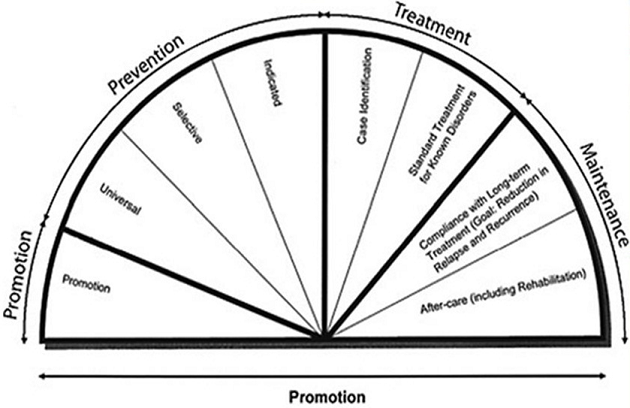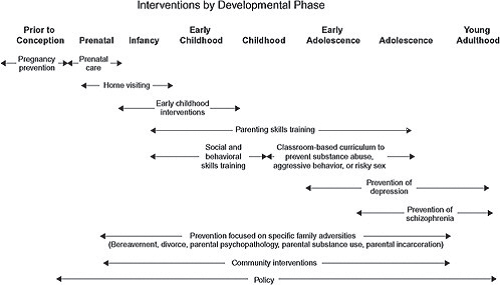Promote Mental Health and Prevent Substance Abuse
Defining the Problem
Mental and emotional well being is essential to overall health.1 At any given time, almost one in five young people nationally are affected by mental, emotional and behavioral (MEB) disorders, including conduct disorders, depression and substance abuse. About three-fourths of all MEB disorders are diagnosed between the ages of 14-24 years.
New York State Prevention Agenda 2013-2018 a Action Plan
MEB health promotion is an emerging field that uses a strengths-based developmental approach. MEB disorder prevention includes mental illness prevention and substance abuse prevention. Substance abuse prevention has more than two decades of etiological and program outcome research, and evidence is emerging to show that mental illness can be prevented.
However, baseline data at a county level is not yet available in New York State for MEB health promotion and disorder prevention, including youth substance abuse prevention. Race, ethnic and socioeconomic MEB indicator data for youth are unavailable, as are asset-based indicators for MEB health. Because studies of effective interventions that synthesize MEB promotion and MEB disorder prevention, recent publications, the first year of the infrastructure goals will involve getting a better understanding of how to integrate policies that support effective interventions. These interventions will require a multi-sector, developmental approach that includes an assessment of New York State's infrastructure for implementation along with strengthening indicator data.
In New York State, there is a critical need for quality mental, emotional and behavioral health promotion and prevention services. Promoting MEB health and preventing MEB disorders, while supporting their integration with quality treatment options, is a cost-effective approach.2
Focus Areas
Three focus areas are identified based on the "Intervention Spectrum for Mental Emotional Behavioral Health"
- Promote Mental, Emotional and Behavioral Well-Being in Communities
The 2009 Institute of Medicine report concluded there is increasing evidence promotion of positive aspects of mental health is an important approach to reducing MEB disorders and related problems. It will serve as a foundation for both prevention and treatment of MEB disorders. - Prevent Substance Abuse and Other Mental Emotional Behavioral Disorders
Substance abuse, depression and other MEB disorders hurt the health, public safety, welfare, education, and functioning of New York State residents. In addition to evidence substance abuse and other MEB disorders can be prevented, there is confirmation that early identification and adequate societal support can prevent and alleviate serious consequences such as death, poor functioning and chronic illness. - Strengthen Infrastructure Across Systems
MEB health promotion and disorders prevention is a relatively new field, requiring a paradigm shift in approach and perspective. Meaningful data and information at the local level, training on quality improvement, evaluation and evidence-based approaches, and cross-disciplinary collaborations need to be strengthened.
The best opportunities to improve the public's mental health are interventions delivered before a disorder manifests itself, to prevent its development. Risk factors for MEB disorders are well-established, effective preventive interventions are available, and the first symptoms typically precede a disorder by two to four years. These interventions can be integrated with routine health care and wellness promotion in health care settings, as well as in schools and community settings.2
Many MEB disorders, such as substance abuse and depression, have lifelong effects that include high psychosocial and economic costs for people, their families, schools and communities. The financial costs nationally in terms of treatment services and lost productivity are estimated at $247 billion annually. Beyond the financial costs, MEB disorders interfere with people's ability to accomplish developmental tasks, such as establishing healthy interpersonal relationships, succeeding in school, making their way into the workforce and staying optimally functional once there. Mental and physical health problems are interwoven. Improvements in mental health help improve individuals and populations' physical health.2

The 2009 National Research Council and Institute of Medicine (IOM) report, Preventing Mental, Emotional and Behavioral Disorders among Young People: Progress and Possibilities2 endorsed the mental health intervention spectrum. In the report, the IOM committee explained that in the last 15-20 years, randomized control studies have shown that MEB disorders can be prevented. In addition, there is strong evidence that MEB health promotion can be applied to populations across the spectrum with positive results.
Hence the IOM committee recommended focusing on MEB health promotion and MEB disorder prevention, as distinct from, though integrated with treatment and maintenance of recovery services. The spectrum illustrates that MEB disorder prevention should be addressed for three sub-groups categorized by level of risk:
- Universal populations targeted without regard to risk level, e.g., all middle school students or all adults in a community center;
- Selected populations that are members of subgroups with elevated levels of risk factors, e.g., children of substance abusers, or people who have experience trauma; and
- Indicated populations demonstrate elevated risk levels and initial symptoms of the disorder, though they are not currently diagnosable for the disorder, e.g., children with early problem behavior, or adults who exhibit depressive symptoms.
A Developmental Perspective

Mental, emotional and behavioral disorders are developmental; they change over the lifespan. The National Association of State Mental Health Program Directors has outlined areas of emphasis for preventing behavioral health problems and promoting positive mental health at different life stages:
- Prenatal and infancy: Proper nutrition during pregnancy and avoidance of toxic substances that negatively impact fetal growth, screening and support for postpartum depression, promotion of secure caregiver attachment, information for caregivers on child development, healthy parenting practices, and connection with needed social services and supports.
- Early childhood: Foster positive caregiver-child interactions and the development of emotional and social communication skills.
- Childhood: Promote self-awareness, social awareness, self-management, relationship skills and responsible decision-making; support for positive strengths-based parenting, improving self-esteem and competency development, and improved teacher training to detect and respond to problems.
- Adolescence: Support bullying-prevention efforts, opportunities for skills development and meaningful engagement in pro-social activities and with positive peer groups, and enhancing open caregiver/youth communication, monitoring of youth activities and reducing household conflict.
- Young adults: Promote support for managing stressors due to enhanced responsibilities associated with entering college or the workforce, as well as pressures connected to becoming financially independent and starting families.
- Adulthood: Socioeconomic empowerment of vulnerable groups, access to sound employment, workplace stress reduction initiatives, relationship enhancement programs for couples, psycho-educational support for low-income adults at risk for depression, opportunities for meaningful engagement in one's community, and physician prevention messages on stress reduction, physical activity and nutrition.
- Older adults: Support for stressors associated with declining health, impaired mobility, death of partners and friends, social isolation, change in social roles, and preparing for end of life; primary care screening for risks for substance abuse and depression; befriending initiatives; community and day centers; and social supports.
Prevention practices include evidence-informed policies, evidence-based programs; approaches based on the "active ingredients" and core principles of such programs and policies.
The IOM report identified interventions by development phases for children and young adults.
Note: The Prevention Agenda 2013-2017 has been extended to 2018 to align its timeline with other state and federal health care reform initiatives.